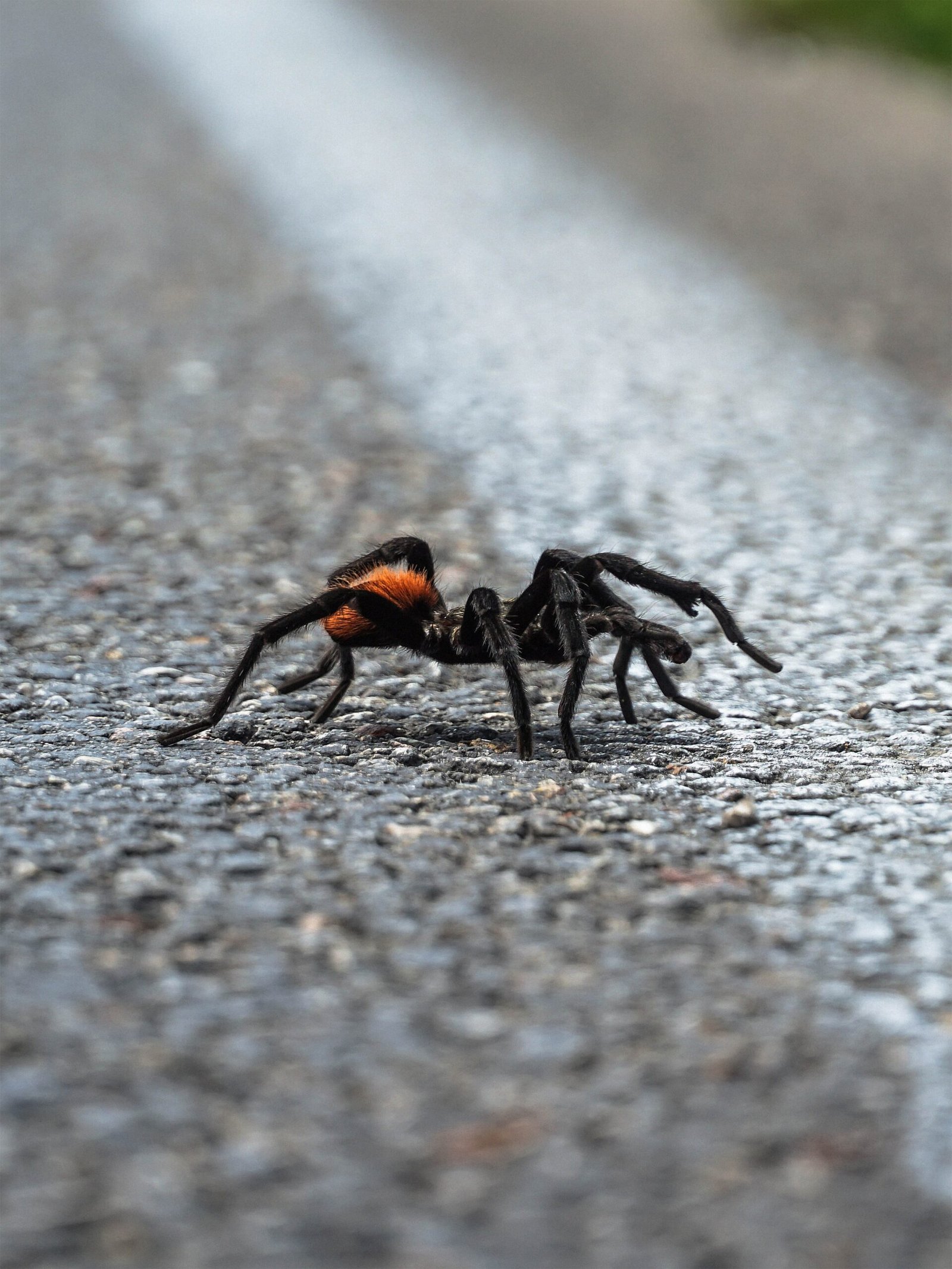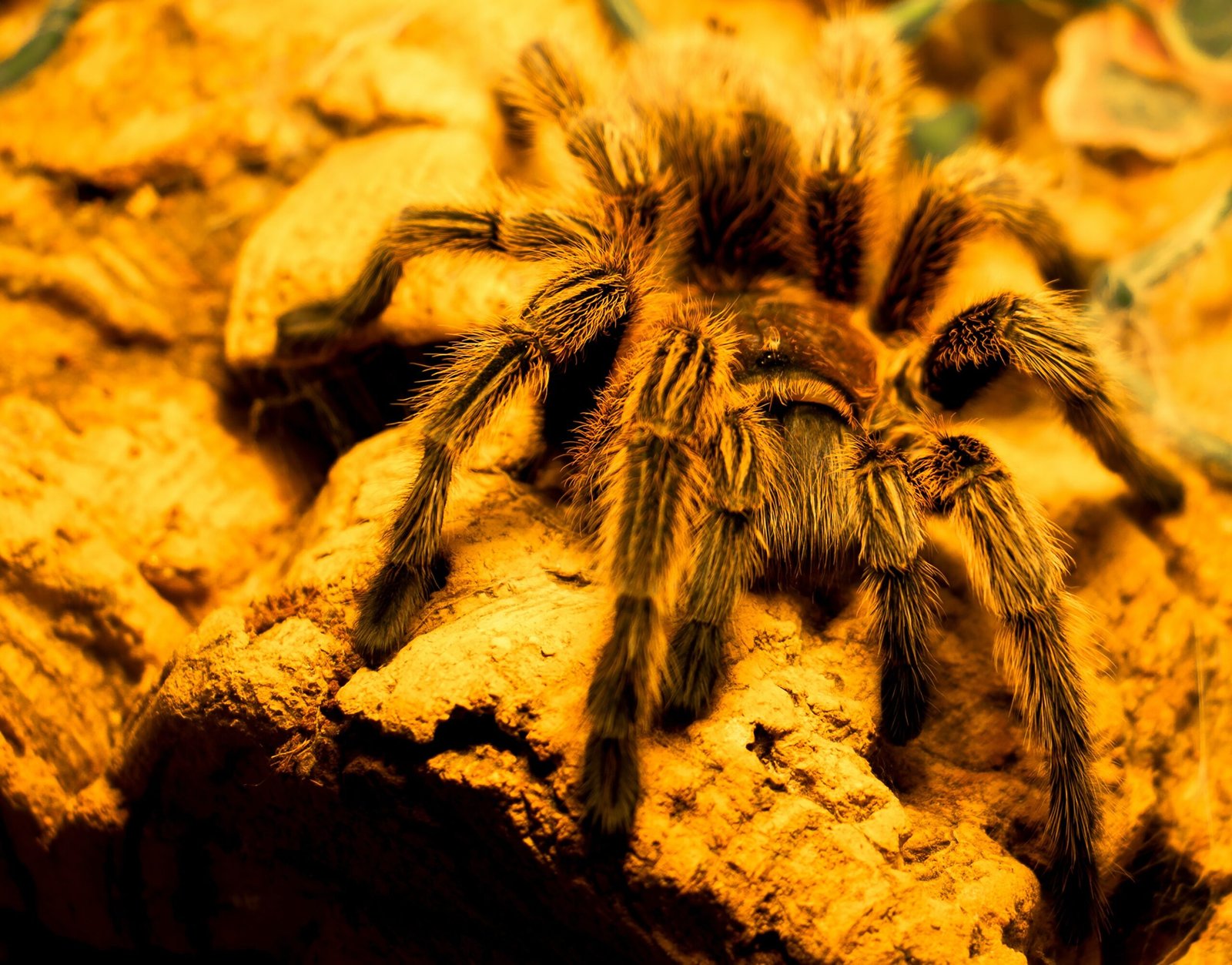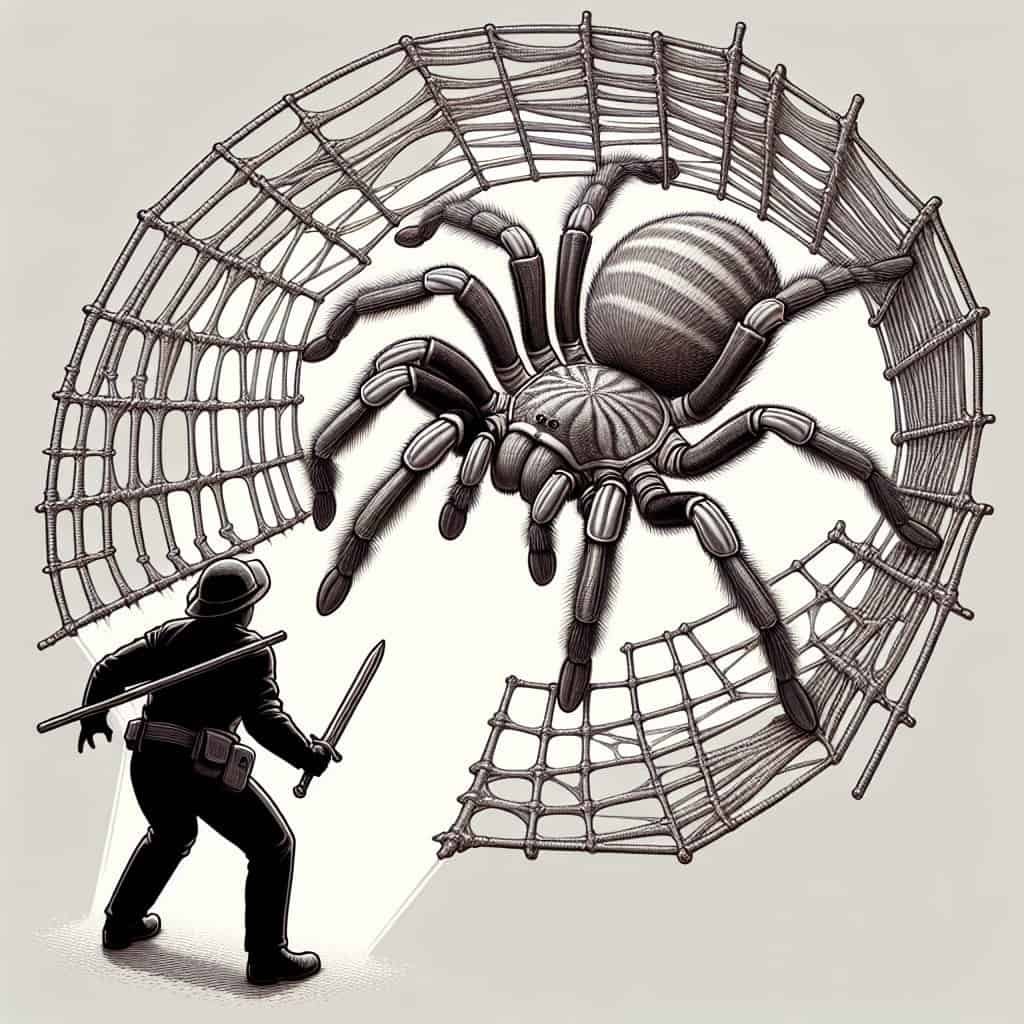Are you a tarantula owner? If so, you may have found yourself wondering how to ensure the safety of your male tarantula during the mating process. It’s a common concern, as the male tarantula is at risk of injury while trying to impress their potential mate. This article will provide you with essential tips and precautions to help you prevent any harm to your male tarantula during this delicate and fascinating phase of their life.

Understanding the Mating Process of Male Tarantulas
The importance of understanding mating behaviors
To ensure a successful and safe mating process for your male tarantula, it is crucial to have a deep understanding of their mating behaviors. Male tarantulas face various risks and injuries during the mating process, which can be avoided with the right knowledge and precautions. By familiarizing yourself with the mating behaviors of male tarantulas, you will be able to create a suitable environment and take appropriate measures to prevent any harm.
Common injuries that can occur during mating
During the mating process, male tarantulas are at risk of sustaining injuries due to the aggressive nature of female tarantulas. Some common injuries include leg loss or damage, fang punctures, and severe stress-induced health issues. These injuries can have serious consequences for the male tarantula, ranging from temporary discomfort to permanent disability or even death. It is essential to understand the potential risks involved and take proactive steps to minimize the chances of injury.
Factors that contribute to male tarantula injuries
Several factors can contribute to male tarantula injuries during the mating process. Inadequate preparation, such as neglecting the male tarantula’s health and habitat, can make them more vulnerable to injuries. Choosing an incompatible or aggressive female tarantula can also increase the risks. Furthermore, the lack of a controlled mating environment and insufficient space for maneuvering can lead to injuries. By addressing these factors, you can significantly reduce the likelihood of male tarantula injuries during mating.
Preparing the Male Tarantula for Mating
Ensuring the male tarantula is in prime health
Before engaging in the mating process, it is crucial to ensure that the male tarantula is in optimal health. Regularly monitoring their overall well-being, including their appetite, activity levels, and physical appearance, is essential. Providing a balanced diet, avoiding stressors, and maintaining a clean and suitable habitat are vital aspects of promoting the male tarantula’s health. Consulting with a veterinarian who specializes in exotic pets can also provide valuable guidance in maintaining the tarantula’s health.
Providing a suitable habitat for mating
Creating the right habitat for mating is essential for the successful reproduction of tarantulas. The male tarantula should have access to a comfortable and spacious enclosure that mimics their natural environment. This includes providing appropriate substrate, hiding spots, and temperature and humidity levels. A well-maintained habitat enhances the overall well-being of the male tarantula and prepares them for the mating process by reducing stress and ensuring their physical and mental health.
Offering a nutritious and balanced diet
To increase the chances of successful mating, it is crucial to provide the male tarantula with a nutritious and balanced diet. Offering a varied diet that consists of live prey, such as crickets and mealworms, can enhance their health and reproductive capacities. It is also important to avoid overfeeding or underfeeding the tarantula, as both can negatively impact their overall health and ability to mate successfully. Regularly assessing their feeding habits and adjusting their diet accordingly is essential.
Creating the right environmental conditions
In addition to providing a suitable habitat, it is important to create the right environmental conditions for the male tarantula. Maintaining appropriate temperature and humidity levels within their enclosure is crucial, as tarantulas are highly sensitive to fluctuations in their environment. Researching the specific requirements of the species you are working with and ensuring that these conditions are met can greatly contribute to the male tarantula’s readiness for mating. Consultation with experienced breeders or tarantula experts can provide valuable insights into the ideal environmental conditions.

Choosing the Right Female Tarantula for Mating
Understanding female tarantula’s aggressiveness
One of the key factors in ensuring a safe and successful mating process for the male tarantula is choosing the right female partner. Female tarantulas can vary greatly in their aggression levels, with some being more prone to aggression than others. It is essential to research and understand the specific behaviors and temperament of the female species you intend to mate with the male tarantula. By selecting a less aggressive female, you can significantly reduce the risk of injuries to the male tarantula during mating.
Matching the size and age of male and female tarantulas
When selecting a female tarantula for mating, it is important to consider the size and age of both the male and female. A significant size difference between the two individuals can increase the chances of injury to the male tarantula, as the female may overpower or harm the smaller male. Matching their sizes ensures a more balanced and safer mating process. Similarly, ensuring that both tarantulas are at similar stages of maturity can promote successful pairings and reduce the risk of injuries.
Identifying compatible tarantula species
To ensure a successful mating process, it is crucial to select tarantula species that are compatible with each other. Different species may have specific behaviors, mating rituals, or physical characteristics that make them more or less likely to successfully mate. Researching and identifying compatible tarantula species is essential to minimize the chances of aggression or incompatibility during mating. Consulting with experienced breeders or experts can provide valuable guidance in this regard.
Avoiding Aggressive Female Behaviors
Recognizing warning signs of aggression
During the mating process, it is important to be able to recognize the warning signs of aggression in female tarantulas. These signs may include aggressive posturing, raising their front legs, hissing sounds, or displaying defensive behaviors. By closely observing the behavior of the female, you can intervene or take precautionary measures before injuries occur. Understanding these warning signs serves as an essential tool in keeping the male tarantula safe during mating.
Implementing precautionary measures to calm the female
If you notice signs of aggression in the female tarantula, it is important to implement precautionary measures to calm her down and avoid potential injuries to the male. This can include reducing any external stressors in the environment, such as excessive noise or disturbances, which may contribute to the female’s aggressive behavior. Additionally, ensuring that the female tarantula is well-fed and not in a defensive state can help to minimize aggression during mating.
Using tools and techniques to handle aggressive females
In situations where the female tarantula displays escalated aggression, it may be necessary to use tools and techniques to handle her safely. Soft brushes or forceps can be used to gently guide the movements of the female without causing harm. It is essential to approach handling with caution and prioritize the safety of both the male and female tarantulas. Seeking guidance from experienced tarantula breeders or experts can provide valuable insights into proper handling techniques.

Ensuring a Controlled Mating Environment
Separating the male and female tarantula during most of the mating process
To minimize the risk of injuries to the male tarantula, it is advisable to keep the male and female tarantulas separated for most of the mating process. This separation reduces opportunities for aggression and gives the male tarantula time to assess the female’s behavior and receptiveness before direct contact. It is important to create a secure and separate enclosure for the male tarantula to ensure their safety during this period.
Introducing the male tarantula cautiously
When it comes time to introduce the male tarantula to the female, caution is crucial. Gradual and controlled introductions can help minimize aggression and the potential for injuries. It is recommended to place the male tarantula’s enclosure near the female’s enclosure and observe their reactions to each other. If both tarantulas display calm and non-aggressive behavior, you can proceed with closer introductions under careful supervision.
Monitoring the mating process closely
During the actual mating process, it is important to closely monitor the interactions between the male and female tarantulas. By doing so, you can prevent any aggressive behaviors from escalating and intervene if necessary. Maintaining a safe distance and being prepared to separate the tarantulas immediately if aggression occurs is crucial. Continuous observation during this period helps to ensure the safety and well-being of both tarantulas.
Providing Sufficient Space for Mating
Understanding the space requirements for tarantula mating
Providing sufficient space for tarantula mating is essential to prevent injuries and allow for natural movements. Mating requires both tarantulas to have enough room for maneuvering and positioning themselves correctly. Insufficient space can lead to accidental injuries, such as leg entanglement or being pinned down by the female. Understanding the specific space requirements of the tarantula species you are working with is crucial for creating a safe and comfortable environment.
Choosing an appropriate mating enclosure
Selecting the right mating enclosure is vital for ensuring the safety and comfort of both the male and female tarantulas. The enclosure should be spacious enough to accommodate both tarantulas comfortably without restricting their movements. It should also be escape-proof and provide easy access for observation and intervention if needed. Specialized tarantula breeding enclosures are commercially available and can be a valuable investment for successfully mating tarantulas.
Allowing ample room for both tarantulas to maneuver
In addition to providing sufficient space within the mating enclosure, it is important to allow ample room for both tarantulas to maneuver during the mating process. This includes ensuring that there are no obstacles or sharp edges that could cause injuries. Providing a clutter-free environment reduces the chances of accidental contact or harmful interactions between the male and female tarantulas. Regularly assessing and adjusting the space as needed promotes a safer and more comfortable mating experience.

Using Protective Barriers and Tools
Implementing physical barriers to prevent injuries
To prevent injuries during mating, the use of physical barriers can be an effective measure. Placing transparent barriers, such as acrylic sheets, between the male and female tarantulas can allow for visual interaction without the risk of physical harm. These barriers act as a protective layer that prevents aggressive behavior and reduces the chances of injury. However, it is important to ensure that the barriers are secure and do not cause unnecessary stress to the tarantulas.
Using soft brushes or forceps for guiding movements
Soft brushes or forceps can be valuable tools for guiding the movements of the tarantulas during the mating process. These tools allow for gentle and controlled interactions without direct physical contact. By guiding the tarantulas’ movements, you can minimize the risk of aggression and prevent injuries. It is important to handle the tools with care and avoid applying excessive pressure or force.
Stabilizing the female during the mating process
In some cases, the female tarantula may exhibit excessive movement or aggression during mating, posing a risk to the male tarantula. To prevent injuries and ensure a controlled mating process, it may be necessary to stabilize the female. This can be achieved by gently restraining her movements or immobilizing her legs using soft restraints. Stabilizing the female reduces the risk of sudden movements or aggression, creating a safer environment for both tarantulas.
Identifying Signs of Distress
Understanding common signs of male tarantula distress
It is crucial to be able to recognize signs of distress in the male tarantula during the mating process. Common indicators of distress may include excessive grooming, lack of appetite, increased aggression, or abnormal behavior. By monitoring these signs closely, you can identify any potential issues or discomfort that the male tarantula may be experiencing. Taking immediate action when distress is observed can prevent further harm or health complications.
Recognizing indications of injury or potential risks
During mating, it is important to watch for indications of injury or potential risks that may compromise the male tarantula’s well-being. These signs may include bleeding, leg loss, difficulty in movement, or visible wounds. Promptly recognizing these signs allows for immediate intervention or separation to prevent further harm. Regularly assessing the male tarantula’s condition and closely observing their behavior contributes to their overall safety during mating.
Taking immediate action if distress is observed
If you observe any signs of distress or indications of injury in the male tarantula, it is crucial to take immediate action. This may involve separating the male from the female, providing appropriate medical care, or seeking professional guidance. Delayed action can worsen the male tarantula’s condition and increase the risk of long-term health issues or even mortality. Always prioritize the welfare of the tarantulas and ensure their safety by responding promptly to any signs of distress.
Seeking Professional Guidance
Consulting with experienced tarantula breeders or experts
For those unfamiliar with tarantula mating practices, seeking guidance from experienced tarantula breeders or experts is highly recommended. These individuals possess extensive knowledge and practical experience in successfully mating tarantulas while minimizing the risk of injuries. They can provide valuable insights, tips, and best practices for creating a safe and controlled mating environment. Consulting with professionals ensures that you are well-informed and prepared for the mating process.
Attending workshops or seminars on tarantula mating
Another beneficial way to expand your knowledge and understanding of tarantula mating is by attending workshops or seminars focused on this topic. These events provide opportunities to learn from seasoned experts and interact with other tarantula enthusiasts. Workshops and seminars often include practical demonstrations, discussions, and the chance to ask questions. Engaging in these educational activities can help build your confidence and deepen your understanding of the mating process.
Exploring online forums and communities for advice
The internet offers a wealth of information and resources for tarantula enthusiasts. Online forums, social media groups, and communities dedicated to tarantulas are valuable platforms to seek advice and share experiences. Engaging with knowledgeable individuals in these communities can provide valuable insights and advice on tarantula mating. However, it is important to critically assess the credibility and reliability of the information obtained and seek multiple opinions before implementing any recommendations.
Post-Mating Care and Recovery
Separating the male and female tarantula after mating
After the mating process is complete, it is crucial to separate the male and female tarantulas. Keeping them apart prevents potential aggression or harm that may occur once mating is over. For the male tarantula, this separation allows them to recover and regain their physical and mental well-being. Ensuring that the male has a separate, comfortable enclosure after mating promotes a stress-free recovery period.
Providing a comfortable and stress-free recovery environment
Creating a comfortable and stress-free recovery environment for the male tarantula is essential for their well-being. This includes providing suitable substrate, temperature, humidity, and access to food and water. Minimizing disturbances and ensuring a calm and secure environment promotes a faster and healthier recovery. Regular monitoring and assessment of the male tarantula’s behavior and physical condition during the recovery period are crucial.
Monitoring the male tarantula’s health and behavior
Even after the completion of mating and the recovery period, it is important to continue monitoring the male tarantula’s health and behavior. Assessing their appetite, activity levels, and overall condition can help identify any lingering issues or potential health complications. Taking proactive steps, such as seeking veterinary care if necessary, ensures that the male tarantula maintains optimal health and well-being in the post-mating phase.
In conclusion, understanding the mating process of male tarantulas is essential in ensuring a safe and successful mating experience. By preparing the male tarantula adequately, choosing the right female partner, avoiding aggressive behaviors, providing a controlled environment, and taking necessary precautions, you can minimize the risk of injuries during mating. Additionally, recognizing signs of distress, seeking professional guidance, and providing post-mating care and recovery further contribute to the male tarantula’s safety and well-being. With the right knowledge and proactive measures, you can facilitate a successful mating process for your male tarantula while ensuring their health and happiness.
